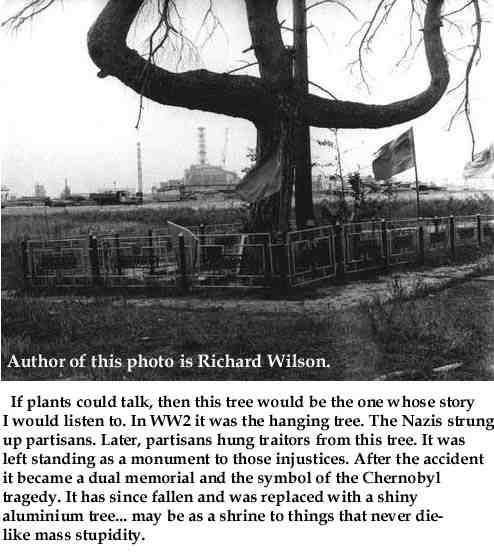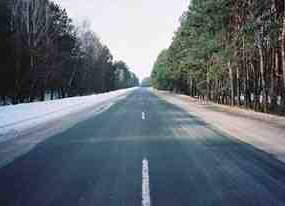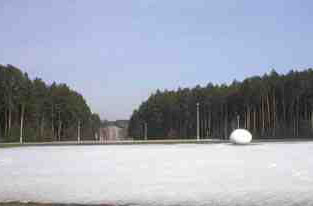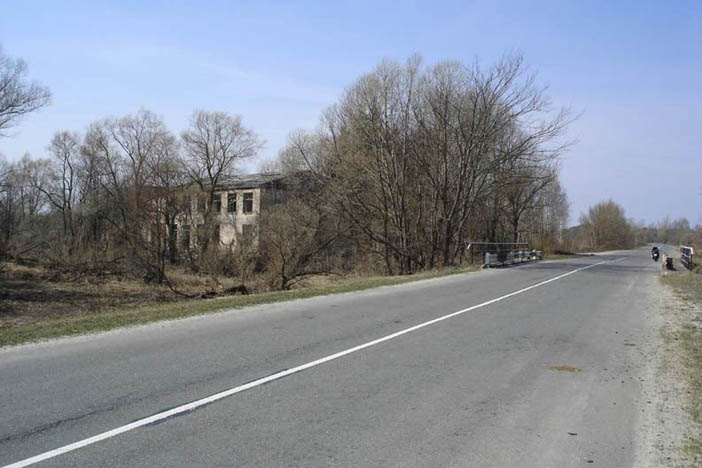
| 600 Years |
| On the Friday evening
of April 25, 1986, the reactor crew at Chernobyl-4 prepared to run a
test the next day to see how long the turbines would keep spinning and
producing power if the electrical power supply went off-line. This was a
dangerous test, but it had been done before. As a part of the
preparation they disabled some critical control systems...including the
automatic shutdown safety mechanisms. Shortly after 1:00 AM on April 26, the flow of coolant water dropped and the power began to increase. At 1:23 AM, the operator moved to shut down the reactor while it was operating in a low power mode. A domino effect consisting of a series of human errors up to this point caused a sharp power surge which in turn triggered a tremendous explosion of steam. This explosion blew the nuclear containment vessel's 2,000 ton cap which allowed radioactive material to be disbursed into the air. Some of the 211 control rods melted and then a second explosion, the cause of which is still the subject of disagreement among experts, threw out fragments of the burning radioactive fuel core, allowed air to rush in, and ignited several tons of graphite insulating blocks. Once graphite starts to burn, its almost impossible to extinguish. It took nine days and 5,000 tons of sand, boron, dolomite, clay and lead dropped from helicopters to put it out. The radiation was so intense that many of those brave pilots died. It was this graphite fire that released most of the radiation into the atmosphere, resulting in troubling atmospheric radiation spikes being measured thousands of miles away. All of this was caused by inexcusable
errors of design and improper system operations. |
 |
| I remember... In Ukrainian language ( where we don't like to say "the") Chernobyl is the name of a grass, wormwood (absinth). This word scares the holy bejesus out of people here. Maybe part of the reason for that among religious people is because the Bible mentions Wormwood in the book of the revelations...which foretells the end of the world. REV 8:10 And the third angel sounded, and there fell a great star from heaven, burning as it were a lamp, and it fell upon the third part of the rivers, and upon the fountains of waters; REV 8:11 And the name of the star is called Wormwood: and the third part of the waters became wormwood; and many men died of the waters, because they were made bitter. Also, in our language, if you break the name up, "chorno" means "black" and "byl" means "pain." If I tell someone that I am heading to Chernie...the best case response is; "Are you nuts?" My dad would say that people are afraid of a deadly thing which they can not see, can not feel and can not smell. Maybe that is because those words are a good description of death itself. Dad is nuclear physicist, and he has educated me about many things. He is much more worried about the speed my bike travels than about the direction I point it. My trips to Chernobyl are not like a walk in the park, but the risk can be managed. Sometimes I go for rides alone, sometimes with a pillion passenger, but never in company with any other vehicle because I do not want anyone to raise dust in front of me. I was a schoolgirl back in 1986 and as soon as radiation levels began to rise in Kiev, dad put all of us on the train to grandma's house. Granny lives 800 km from here and dad wasn't sure if it was far enough away to keep us out of reach of the big bad wolf of a nuclear meltdown. The Communist government that was in power at that time kept silent about this accident. In Kiev, they forced people to take part in their preciously stupid labor day parade. It was then that ordinary people began hearing the news of the accident from foreign radio stations and relatives of those who died. The real panic began seven to ten days after accident. Those who were exposed to the exceedingly high levels of nuclear radiation in the first 10 days when it was still a state secret, including unsuspecting visitors to the area, either died or developed serious health problems. |
 Heading North |
| Time to go for a ride. This is our
road. There won't be many cars on these roads. This place has ill fame
and people try not to settle here. The farther we go the cheaper the
land, the fewer the people, and the more beautiful nature becomes...quite the reverse
of everywhere else in the world...and a forecast of things to come.
|
 |
| As we pass the 86th kilometer we
encounter a giant egg...which marks the point where civilization as we
know it ends...and the Chernobyl ride begins. Someone brought the egg from Germany. It represents LIFE breaking through the hard shell of the unknown. I am not sure if this symbolism is encouraging or not. Either way, it makes people think, and for us this is our last chance to stock up on edible food, drinkable water, and uncontaminated fuel. Our journey from here is a gradually darkening picture of deserted towns, empty villages, and dead farms. |
 |
Radiation from the reactor's explosion was disbursed unevenly by the winds, as if in a chessboard fashion, leaving some places alive and others dead. It's hard to say where the fairyland begins. To me it begins behind this bridge. This dead village is located some 50 km west of the reactor. |